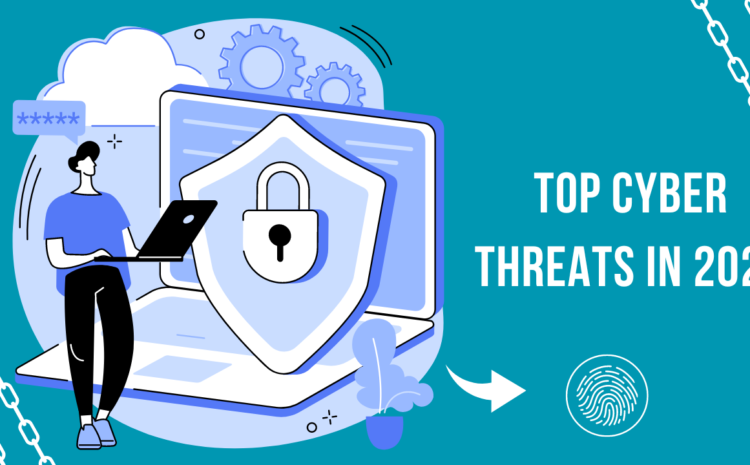
Top Cyber Threats in 2024 and How Cyber Insurance Protects You
In an increasingly digital world, cyber threats are evolving rapidly, posing significant risks to businesses and individuals alike. As technology advances, so do the methods and sophistication of cybercriminals. In 2024, several cyber threats stand out for their potential impact and frequency. Understanding these threats and knowing how cyber insurance can mitigate their effects is crucial for maintaining security and ensuring business continuity.
1. Ransomware Attacks
Overview
Ransomware remains one of the most damaging cyber threats. In 2024, ransomware attacks have become more targeted and sophisticated, often focusing on critical infrastructure and high-value targets. Attackers encrypt an organization’s data and demand a ransom for the decryption key, causing significant operational disruptions and financial losses.
How Cyber Insurance Protects You
- Ransom Payments: Some cyber insurance policies cover ransom payments, helping businesses comply with attackers’ demands without bearing the full financial burden.
- Incident Response: Access to cybersecurity experts who can help contain and mitigate the attack.
- Data Recovery: Coverage for the costs associated with restoring or recovering encrypted data, minimizing downtime and data loss.
2. Phishing and Social Engineering
Overview
Phishing attacks use deceptive emails, messages, or websites to trick individuals into revealing sensitive information such as login credentials or financial details. Social engineering has become more refined, making it harder to detect malicious intent and increasing the likelihood of successful attacks.
How Cyber Insurance Protects You
- Fraudulent Transaction Coverage: Protects against financial losses resulting from successful phishing attacks.
- Employee Training Support: Some insurers offer resources or discounts for employee cybersecurity training, reducing the likelihood of successful attacks.
- Legal Costs: Coverage for legal fees if sensitive customer information is compromised.
3. Supply Chain Attacks
Overview
Supply chain attacks target vulnerabilities in third-party vendors or service providers to gain access to a larger target. The interconnectedness of modern businesses means that a breach in one part of the supply chain can have far-reaching consequences.
How Cyber Insurance Protects You
- Third-Party Liability: Covers claims arising from breaches in third-party services.
- Supply Chain Interruption: Financial protection against business interruptions caused by attacks on suppliers.
- Due Diligence Costs: Assistance with the costs related to vetting and securing third-party vendors.
4. AI-Powered Attacks
Overview
The use of artificial intelligence (AI) by cybercriminals has increased, enabling more efficient and effective attacks. AI can automate tasks such as password cracking, phishing personalization, and vulnerability identification, making attacks more sophisticated and harder to detect.
How Cyber Insurance Protects You
- Advanced Threat Detection Support: Coverage for implementing AI-based security measures to counteract AI-driven attacks.
- Incident Response: Access to experts who can handle sophisticated AI-powered attacks.
- Loss Mitigation: Financial coverage for damages caused by AI-powered breaches.
5. Zero-Day Exploits
Overview
Zero-day exploits target previously unknown vulnerabilities in software or hardware. These attacks are highly effective because there are no patches or defenses in place when they occur, making them difficult to prevent and mitigate.
How Cyber Insurance Protects You
- Incident Response: Quick access to experts to manage and mitigate the damage from zero-day exploits.
- Data Breach Coverage: Financial support for addressing data breaches resulting from zero-day attacks.
- Legal and Regulatory Costs: Assistance with legal fees and fines associated with the breach.
6. IoT Vulnerabilities
Overview
The proliferation of Internet of Things (IoT) devices has expanded the attack surface for cybercriminals. Insecure devices can be exploited to gain unauthorized access to networks or used as entry points for larger attacks, compromising overall security.
How Cyber Insurance Protects You
- Device Replacement Costs: Coverage for the costs of replacing compromised IoT devices.
- Network Security Coverage: Financial support for securing and restoring network infrastructure affected by IoT vulnerabilities.
- Incident Response: Assistance with managing breaches involving IoT devices.
7. Data Breaches
Overview
Data breaches involve unauthorized access to sensitive information, such as personal data, financial records, or intellectual property. The consequences include financial losses, reputational damage, and legal penalties, making data breaches a critical concern for organizations.
How Cyber Insurance Protects You
- Notification Costs: Coverage for the costs of notifying affected parties and complying with data breach regulations.
- Credit Monitoring Services: Financial support for providing credit monitoring to affected individuals.
- Legal and Regulatory Costs: Assistance with legal fees and potential fines resulting from the breach.
8. Insider Threats
Overview
Insider threats originate from within the organization, involving employees, contractors, or partners who intentionally or unintentionally compromise security. These threats can lead to data leaks, sabotage, or unauthorized access, often causing significant damage before detection.
How Cyber Insurance Protects You
- Employee Misconduct Coverage: Financial protection against losses caused by insider actions.
- Forensic Investigation: Coverage for costs related to investigating insider breaches.
- Legal Support: Assistance with legal fees arising from internal security incidents.
9. Cryptojacking and Cryptocurrency-related Threats
Overview
Cryptojacking involves unauthorized use of computing resources to mine cryptocurrencies. This can slow down systems, increase energy costs, and potentially lead to broader security breaches. Additionally, the rise of cryptocurrencies has introduced new avenues for financial fraud and extortion.
How Cyber Insurance Protects You
- System Recovery Costs: Coverage for restoring systems impacted by cryptojacking.
- Incident Response: Support for addressing and mitigating the attack.
- Financial Losses: Protection against losses resulting from increased operational costs or compromised systems.
10. Distributed Denial of Service (DDoS) Attacks
Overview
DDoS attacks overwhelm online services with traffic, causing downtime and disrupting business operations. These attacks can be used as a distraction for more targeted breaches or for extortion purposes, making them a versatile threat.
How Cyber Insurance Protects You
- Business Interruption Coverage: Financial support for lost revenue and operational costs during downtime.
- DDoS Mitigation Services: Coverage for the costs of engaging DDoS protection services.
- Extortion Payments: Assistance with payments if the attack is part of a larger extortion scheme.
How Cyber Insurance Protects You Against These Threats
Cyber insurance policies offer a comprehensive range of protections designed to mitigate the financial and operational impacts of various cyber threats. Here’s how cyber insurance can safeguard your business:
1. Financial Coverage
Cyber insurance covers costs associated with data breaches, ransomware payments, legal fees, and more. This financial protection helps organizations manage unexpected expenses resulting from cyber incidents.
2. Incident Response
Access to cybersecurity experts and incident response teams is a key feature of cyber insurance. These professionals help contain and mitigate attacks, reducing the potential damage and accelerating recovery.
3. Legal and Regulatory Support
Cyber insurance helps cover legal fees and regulatory fines that may arise from data breaches or non-compliance with data protection laws. This support is crucial for navigating complex legal landscapes post-incident.
4. Business Continuity
Financial support to maintain operations during and after an attack ensures minimal disruption to business activities. This continuity is vital for preserving revenue streams and maintaining customer trust.
5. Reputation Management
Assistance with public relations efforts helps manage and repair your organization’s reputation after a cyber incident, mitigating long-term reputational damage.
6. Data Recovery Assistance
Cyber insurance helps cover the costs of restoring or recovering lost or compromised data, ensuring that your business can quickly resume normal operations.
7. Extortion Coverage
Some policies provide support in negotiating and paying ransoms if necessary, helping to manage and resolve extortion attempts effectively.
Conclusion
The cyber threat landscape in 2024 is more complex and dangerous than ever, with attackers employing increasingly sophisticated methods to exploit vulnerabilities. Cyber insurance is an essential component of a comprehensive cybersecurity strategy, providing the financial protection and support needed to navigate and recover from cyber incidents. By understanding the top cyber threats and leveraging cyber insurance, businesses and individuals can better safeguard their digital assets and ensure resilience in the face of evolving cyber risks.
Investing in cyber insurance not only protects against potential financial losses but also provides peace of mind, knowing that expert assistance and comprehensive coverage are available when needed most. As cyber threats continue to grow in frequency and complexity, having robust cyber insurance coverage is no longer a luxury—it’s a necessity for safeguarding your digital future.




1 Comment
** “Given the rapid evolution of cyber threats, should we consider a ‘digital detox’ as a viable strategy for businesses to mitigate risks, even if it hampers productivity and innovation? What are the ethical and practical implications of such an approach in today’s interconnected world?